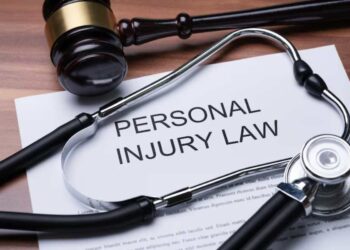When a serious injury occurs, the repercussions extend far beyond physical harm. The persistent pain, emotional trauma, and diminished quality of life can be overwhelming, yet these intangible losses are often the most challenging to quantify. Assigning a monetary value to pain and suffering requires a unique collaboration between legal and medical professionals. In Rockland County, and elsewhere, personal injury lawyers work closely with medical experts to ensure that victims receive fair compensation for their suffering.
Personal injury law recognizes that accidents can inflict deep emotional and psychological wounds, often leaving victims grappling with anxiety, depression, post-traumatic stress disorder, and a profound sense of loss. Unlike medical bills or lost wages, which have a clear financial value, pain and suffering are not easily quantifiable. However, they are no less real or deserving of compensation.
Personal injury lawyers play a vital role in advocating for the rights of injury victims. They understand the complexities of personal injury law and have the experience to navigate the legal process. In cases involving pain and suffering, lawyers often turn to medical professionals for assistance in quantifying these intangible damages.
Medical professionals, with their expertise in diagnosing and treating injuries, provide crucial insights into the extent of a victim’s pain and suffering. They can document the severity of the injury, the treatments required, and the prognosis for recovery. This information is invaluable in establishing the impact of the injury on the victim’s life and calculating the appropriate compensation.
The Lawyer’s Role In Pain And Suffering Claims
Personal injury lawyers serve as advocates for individuals who have suffered harm due to the negligence or wrongdoing of others. In the case of serious injuries, their role becomes even more critical as they strive to secure fair compensation for their clients, including damages for pain and suffering. A skilled personal injury attorney will meticulously gather evidence to build a strong case, often working closely with medical experts to understand the full scope of their client’s injuries and the resulting impact on their life.
One of the primary responsibilities of a personal injury lawyer is to gather and organize all relevant medical records, including doctor’s notes, test results, and treatment plans. These documents serve as a foundation for the pain and suffering claim, providing a detailed account of the injuries sustained, the treatment received, and the ongoing challenges faced by the victim. In Rockland County, for instance, a personal injury attorney Rockland County might consult with local medical professionals to gain further insights into the specific needs and resources available to their client within the community.
Beyond medical records, personal injury lawyers also seek out expert testimony from physicians, therapists, and other healthcare professionals. These experts can provide valuable insights into the nature and severity of the injury, the long-term prognosis, and the expected impact on the victim’s quality of life. Their testimony can be instrumental in convincing a jury or insurance company of the legitimacy and magnitude of the pain and suffering experienced by the victim.
The Doctor’s Role In Pain And Suffering Claims
Medical professionals play an equally vital role in pain and suffering claims. Their expertise is not only essential for treating the physical injuries sustained in an accident but also for documenting and assessing the often hidden emotional and psychological trauma that follows. Detailed medical records serve as a critical foundation for any personal injury claim, providing a chronological account of the victim’s medical journey, including diagnoses, treatments, and ongoing challenges.
Doctors and other healthcare providers are trained to identify and diagnose various conditions that can contribute to pain and suffering, such as chronic pain syndromes, post-traumatic stress disorder, and depression. Their observations and diagnoses are invaluable in demonstrating the link between the accident and the victim’s ongoing struggles. A thorough medical evaluation can also uncover potential long-term complications and the need for future medical care, which are essential factors in determining the appropriate compensation for pain and suffering.
In addition to diagnosis and treatment, medical professionals often play a role in the legal process by providing expert testimony. This can involve explaining complex medical concepts to a jury, interpreting medical records, and offering opinions on the cause, severity, and prognosis of the victim’s injuries. Their testimony can be particularly influential in cases where the extent of pain and suffering is disputed or where the insurance company is attempting to minimize the victim’s claim.
Collaboration Between Lawyers And Doctors
The synergy between personal injury lawyers and medical professionals is crucial in quantifying pain and suffering. Lawyers, with their legal acumen and understanding of the court system, rely on doctors and other medical experts to provide objective evidence of the extent and impact of the injuries sustained. This collaboration ensures that the victim’s pain and suffering are accurately represented and fairly compensated.
Personal injury lawyers often consult with medical professionals early in the case to gain a comprehensive understanding of the injuries sustained. This involves reviewing medical records, discussing treatment plans, and conducting a hospital study to seek expert opinions on the long-term consequences of the injuries. By understanding the full scope of the injury, lawyers can develop a stronger case for their clients, advocating for damages that reflect the true cost of the pain and suffering endured.
Furthermore, medical professionals can serve as expert witnesses in court, offering their professional opinions on the extent of the injuries, the effectiveness of treatment, and the prognosis for recovery. Their testimony can be invaluable in proving the link between the accident and the victim’s pain and suffering, and in persuading a jury to award fair compensation. For instance, a psychiatrist might testify about the psychological trauma experienced by the victim, while a physical therapist could elaborate on the limitations caused by a physical injury and the challenges of rehabilitation.
Methods Used To Quantify Pain And Suffering
Quantifying pain and suffering is a complex task, as there’s no one-size-fits-all formula. However, personal injury lawyers and medical professionals employ various methods to estimate the value of these damages.
One common approach is the multiplier method. This involves calculating the total economic damages, such as medical expenses and lost wages, and then multiplying that amount by a factor between 1.5 and 5, depending on the severity of the injury and the impact on the victim’s life. For example, a severe injury with lifelong consequences might warrant a higher multiplier than a minor injury with a short recovery period.
Another method is the per diem approach, which assigns a daily value to pain and suffering. This daily rate is then multiplied by the number of days the victim is expected to experience pain and suffering. The per diem amount can vary depending on factors such as the severity of the injury, the victim’s age, and the impact on their daily activities.
In both methods, medical evidence plays a crucial role. Medical bills, treatment plans, and expert testimony can all be used to substantiate the victim’s claim for pain and suffering. Additionally, the victim’s testimony about their daily struggles and limitations can be powerful evidence of the impact of the injury on their life. Photographs, videos, and journals documenting the victim’s pain and suffering can also be used to support their claim.
Conclusion
The aftermath of a serious injury can be a tumultuous journey, marked by physical pain, emotional distress, and significant life changes. While the road to recovery may be long and arduous, it’s important to remember that you don’t have to navigate it alone. Personal injury lawyers and medical professionals are here to help.
By working together, these experts can accurately assess the full extent of your injuries, including the often-overlooked pain and suffering. They can gather evidence, build a compelling case, and fight for your right to fair compensation. Whether through negotiation or litigation, their combined expertise can help you secure the financial resources you need to heal, adapt to your new circumstances, and move forward with your life.
If you or a loved one has suffered a serious injury, don’t hesitate to seek legal and medical help. Remember, your pain and suffering are real, and you deserve to be compensated for them.










